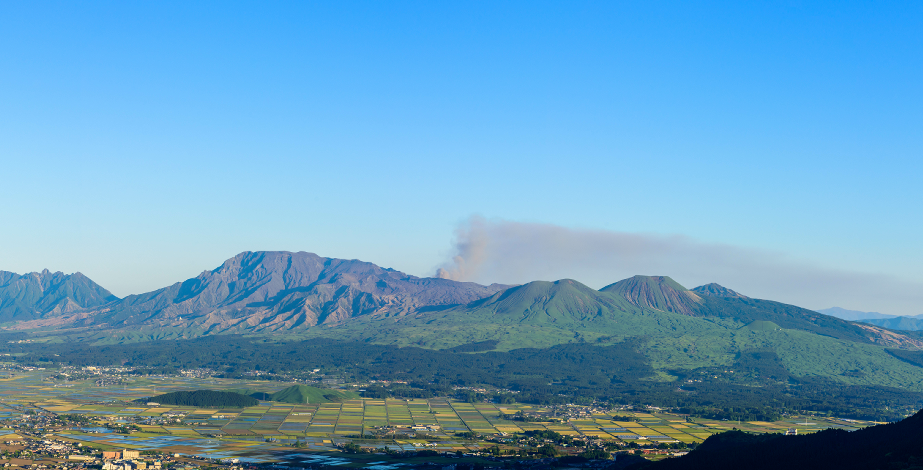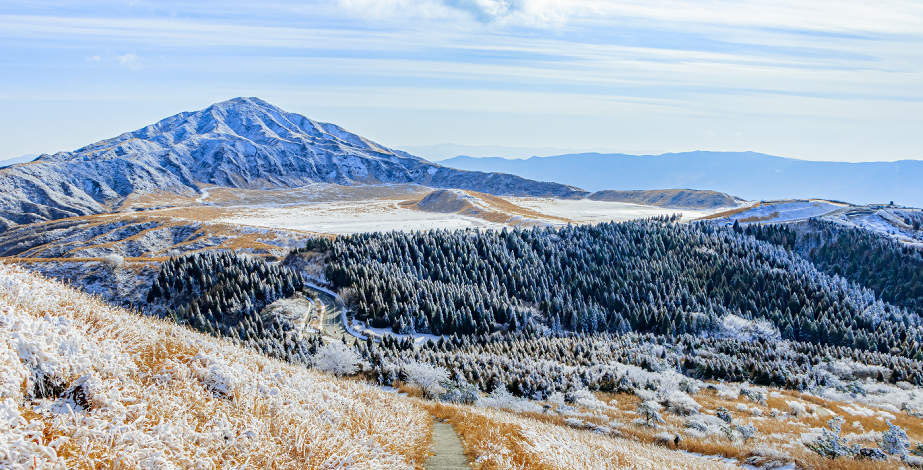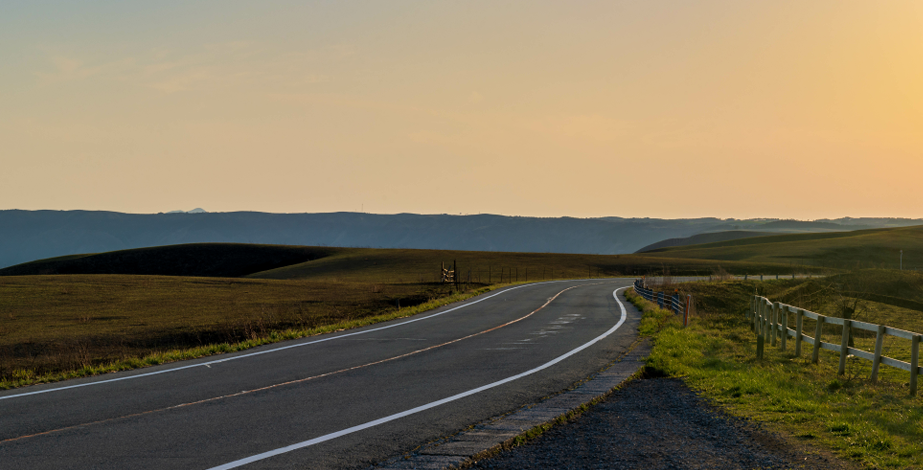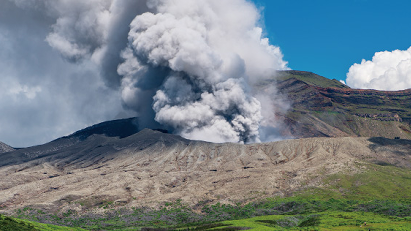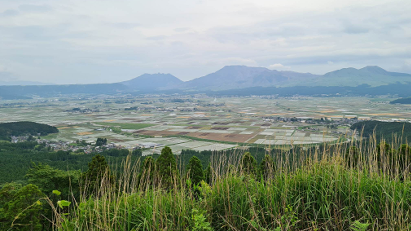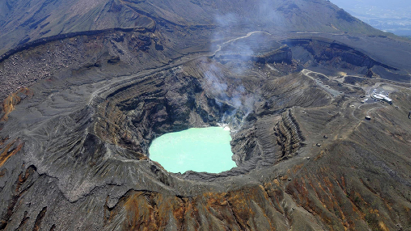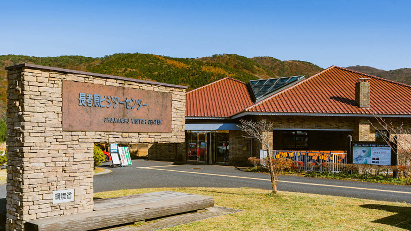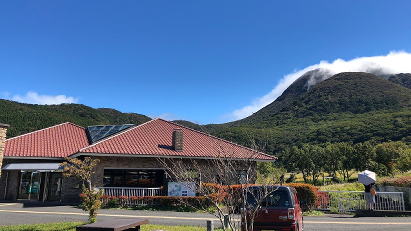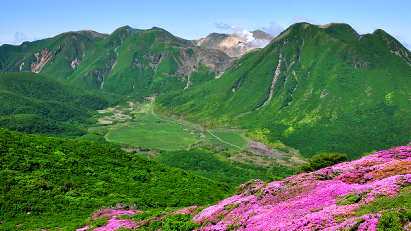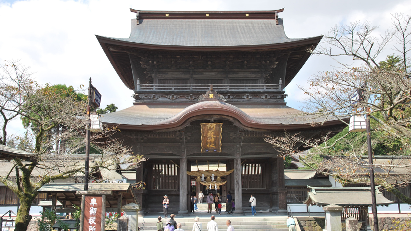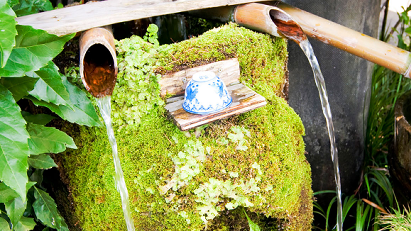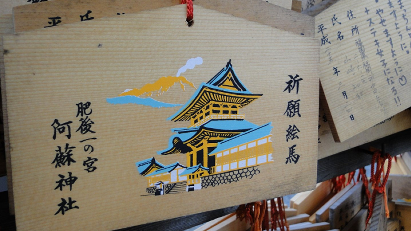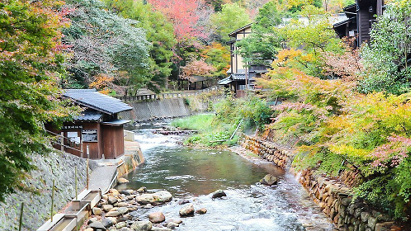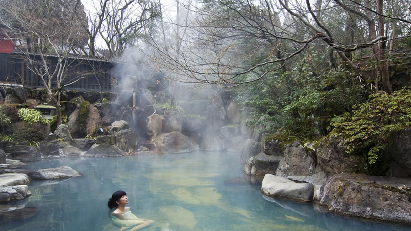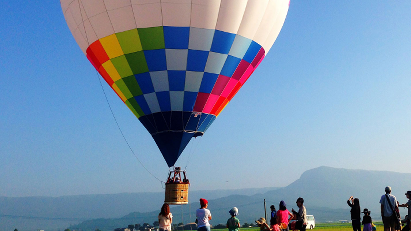Kumamoto with
Geologically, Aso-tale only just getting started; the current landscape was created by a burst of volcanic activity that erupted 270,000 years ago and ended just 90,000 years ago. Aso-Kuju National Park's ecosystem and culture are shaped by the craters, peaks, plains, and hills that were formed thousands of years ago.
Map of Kumamoto Castle
The Tokaido, Sanyo, and Kyushu Shinkansen offer service between Tokyo and Kumamoto. Along the route, there must be one train change, usually at Shin-Osaka or Hakata Station.
Flights between Tokyo and Kumamoto are frequently operated by JAL, ANA, Solaseed Air, and Jetstar Japan.
Kumamoto Station to Aso Station is around a two-hour one-way journey that costs 1530 yen and is covered by the Sun Q Pass.
Mt. Aso Crater
One of the largest calderas in the world, Mount Aso's caldera measures 25 kilometers north to south and 18 kilometers east to west.
At the center of the caldera are five mountains known collectively as "Aso Gogaku": Mt. Nekodake, Mt. Takadake, Mt. Nakadake, Mt. Eboshidake, and Mt. Kichimadake. The crater of Mt. Nakadake, which has a perimeter of 4 kilometers and a diameter of 600 meters, is still active. Up close, you can see the enormous crater spewing white smoke and the breathtaking environment. It's possible that you won't be able to get close to the crater when there is a lot of volcanic activity.
Chojabaru Visitor Center
The Aso-Kuju National Park Kuju region is highlighted in the displays and materials in the Chojabaru Visitor Center. Visitors can observe a large-scale satellite image of the Aso-Kuju region as well as an 18-minute High-Vision theatrical presentation on the four seasons of Kuju. Additional displays that were built by Center staff members demonstrate how the environment varies with the seasons.
The Tadewara Marsh, which has been named a Wetland of International Importance under the Ramsar Convention, is connected to the Center. The Center serves as a resource for information on Tadewara's past, grassland fire, and the seasonal life forms. Commentary on the exhibits is provided in English, Chinese, and Korean.
Aso Shrine
Aso Shrine whose beginnings are unknown is thought to have existed for about two thousand years at the end of the Yayoi Period (300 BC to 300 AD). It was regarded as the most significant shrine in Kumamoto Prefecture's former Higo Province.
The two-story Romon Gate, one of Japan's three largest gates of its sort, is the shrine's most striking feature. The Haiden, the shrine's offering hall, is located behind the gate. At Aso Shrine, twelve gods are worshipped, and one of them is said to have created the Aso region. The temple also features a pine tree that is said to provide marriage luck.
Kurokawa Onsen
One of Kyushu's most picturesque hot spring villages, Kurokawa Onsen is about 20 kilometers north of Mount Aso and is situated in the heart of Kyushu. Kurokawa has avoided the enormous concrete hotels, neon signs, and garish colors found in many of Japan's other resort towns because to well-coordinated efforts by the municipality to preserve a nice, traditional environment.
Kurokawa's townscape, on the other hand, is dominated by organic hues and materials, including timber structures, mud-brick walls, stone steps, and a river that runs through it. Except for a few ryokan that are placed farther from the town center, the town center, which is situated in a forested valley, is small and simple to navigate on foot.
Others

Open time
Aso Crater All timeChojabaru Visitor Center 9:00~16:00
Aso Shrine 9:00~17:00
Kurokawa Onsen All time
Aso National Park All time
©
2023 - 2026
AnimeMaps
Anime events in Tokyo, Japan and all the other part of Japan`s anime events info are here! We willl give you guys not only anime event recommand but also summer festivals as well.
All of the Anime pictures rights are goes to the production company and not us. we are just citing anime pictures from production company. Please check the words written just under or next to the each anime pictures. All of the rights goes to there written with © Thank you for understanding.
「このサイトはアフィリエイト広告(アマゾンアソシエイト含む)を掲載しています。」
All of the Anime pictures rights are goes to the production company and not us. we are just citing anime pictures from production company. Please check the words written just under or next to the each anime pictures. All of the rights goes to there written with © Thank you for understanding.
「このサイトはアフィリエイト広告(アマゾンアソシエイト含む)を掲載しています。」

